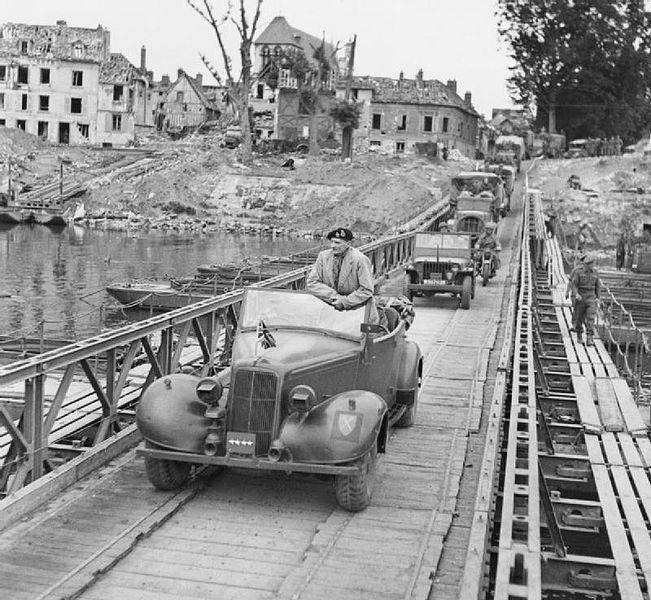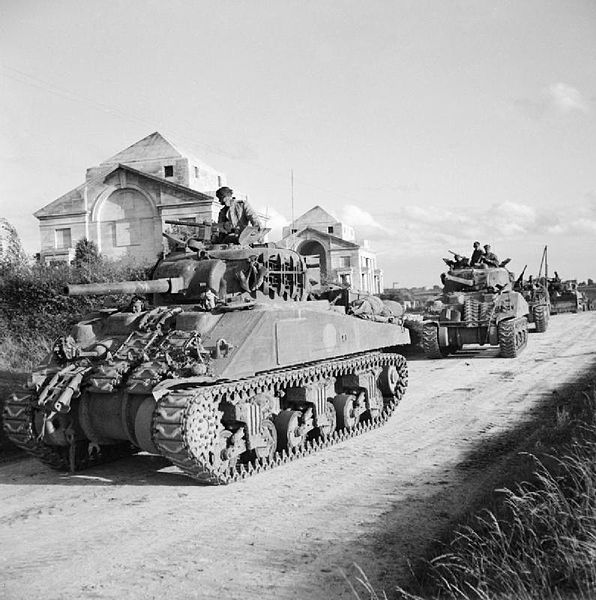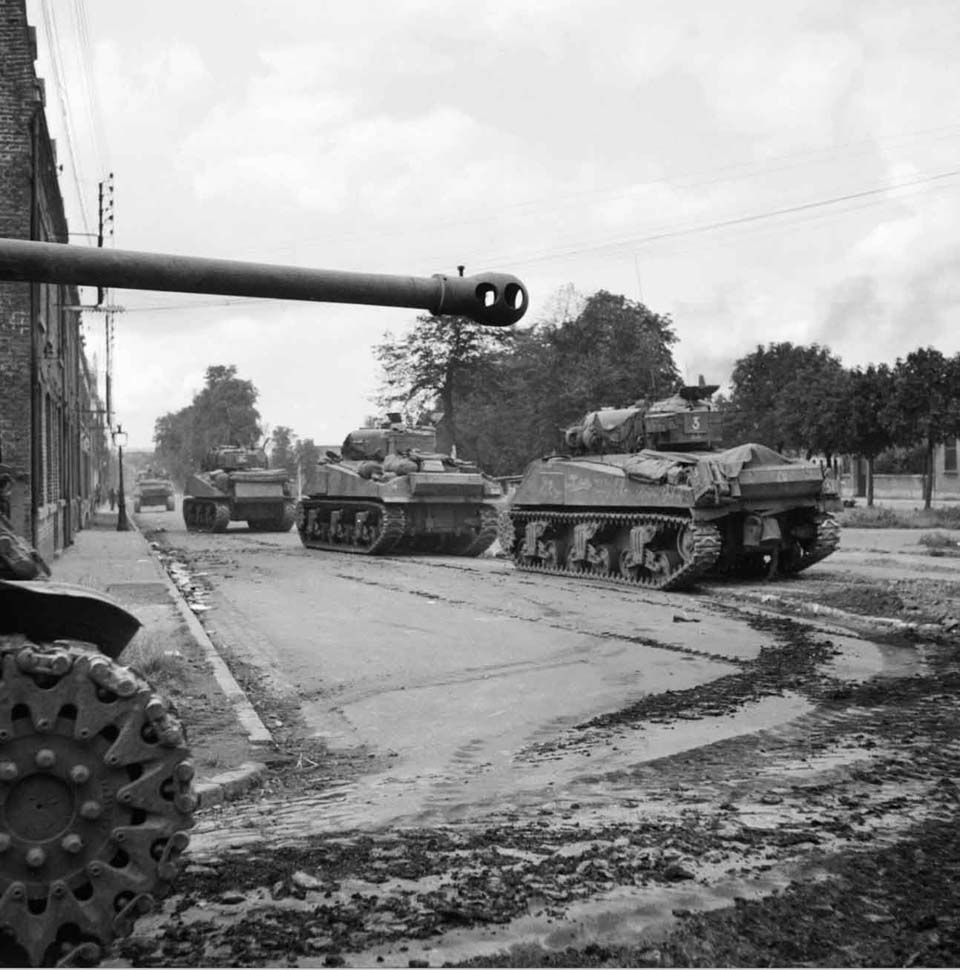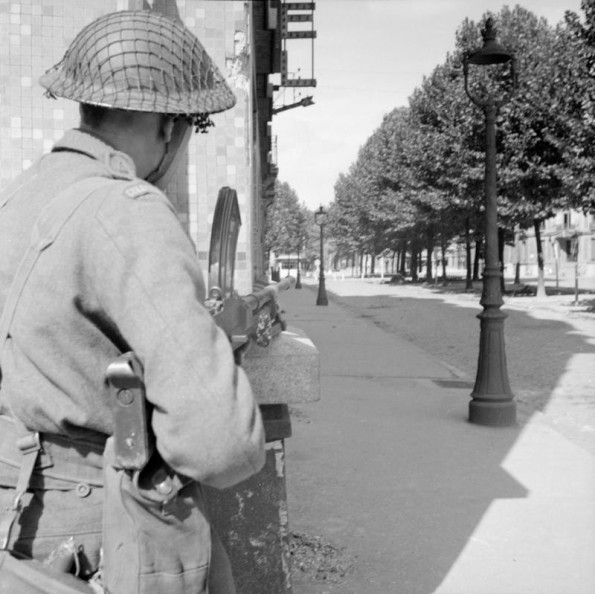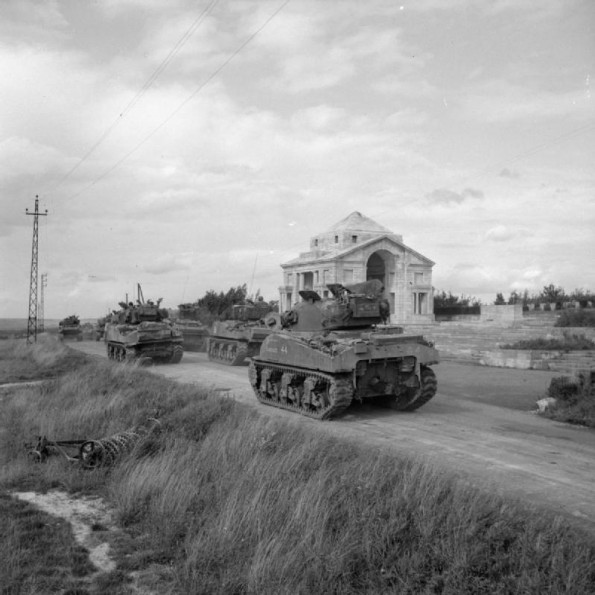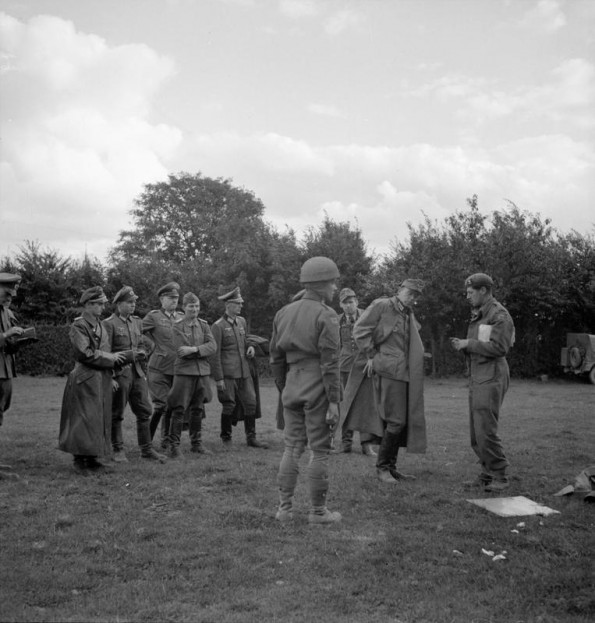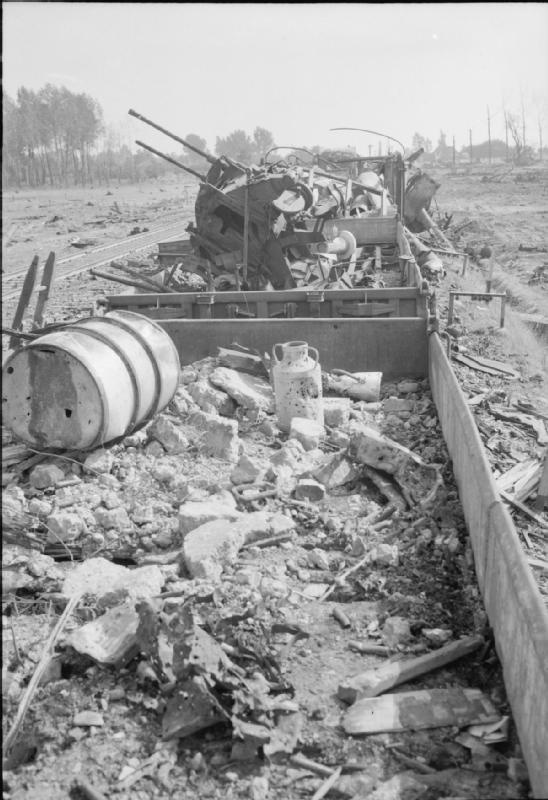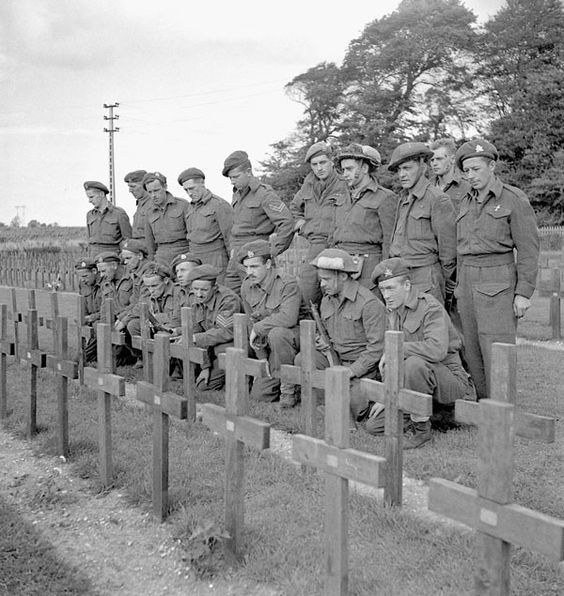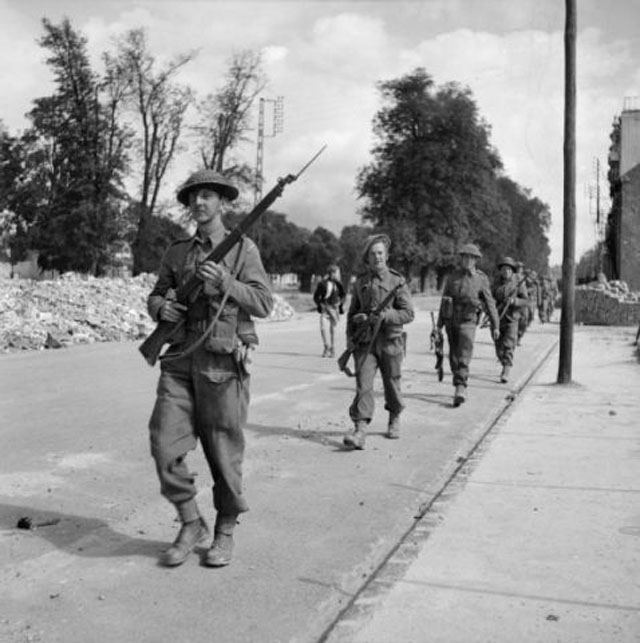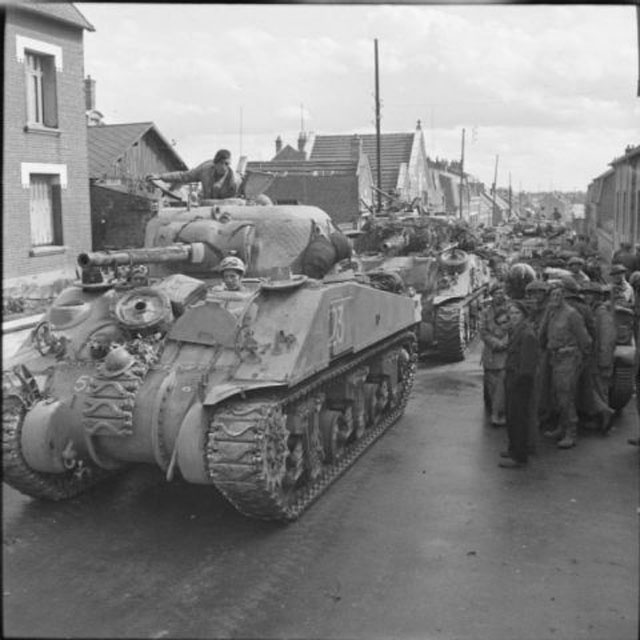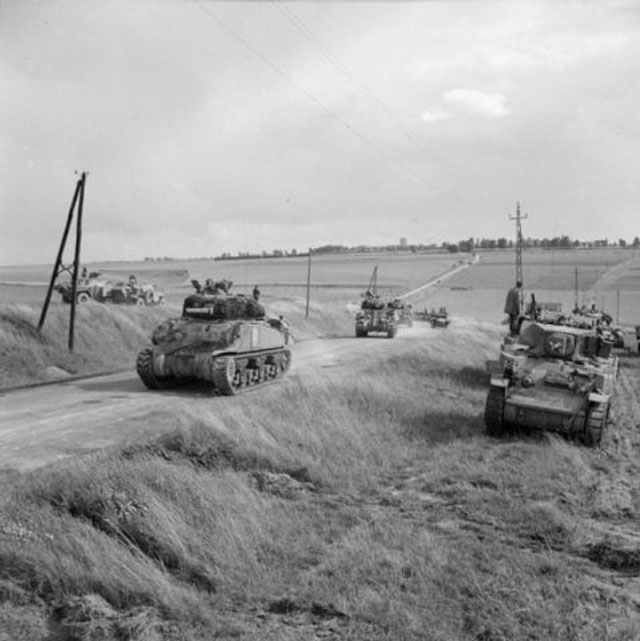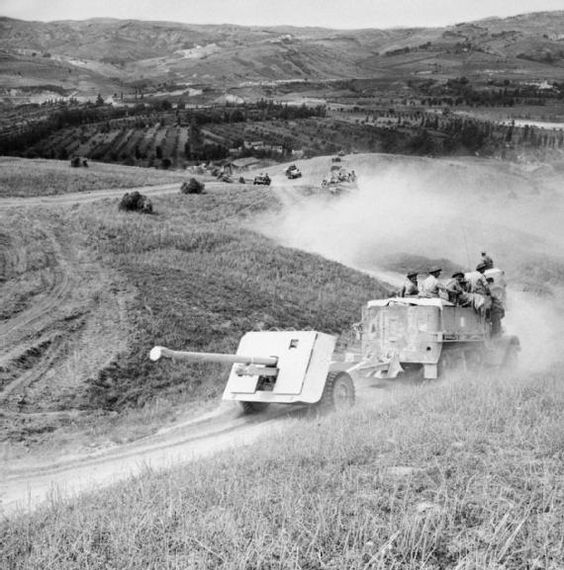Air Operations, Bonin and Volcano Islands
USN carrier aircraft from Task Group 38.4 attack Chichi Jima and Iwo Jima. A VF(N)-77 F6F downs an H8K 'Emily' flying boat at sea at 0330 hours.
[Air Operations, Carolines
- 11th Heavy Bomb Group B-24s based in the Marshall Islands attack the Truk Atoll.
- 5th and 307th Heavy Bomb group B-24s attack targets in the Palau Islands. One B-24 is downed by anti-aircraft fire over the Palau Islands.
Air Operations, CBI
BURMA- 1Several 10th Air Force P-47s attack Bhamo and nearby river traffic.
- 4 308th Heavy Bomb Group B-24s attack a small freighter in the Formosa Strait.
- 12 341st Medium Bomb Group B-25s attack the Kaitak airfield at Hong Kong and a supply depot near Canton.
- B-25s attack the Hengyang airfield, road traffic near Nanyo, and targets of opportunity around Anjen.
- 61 14th Air Force P-51s and P-40s attack numerous targets in east-central China.
- A 23rd Fighter Group P-40 downs a Ki-43 'Oscar' fighter near Tatung.
Air Operations, East Indies
V Fighter Command fighter-bombers attack Boela and the Amahai airfield on Ceram.
[Air Operations, Europe
RAF BOMBER COMMANDDaylight Ops:
- 121 aircraft of Nos. 4 and 8 Groups bomb V-2 rocket storage sites at Lumbres and La Porchinte. In the aircraft total are 97 Halifaxes, 15 Mosquitos and 9 Lancasters. Both raids are successful without any aircraft loss.
Minor Ops:
- 35 Mosquitos are sent to Bremen, 7 aircraft are on Resistance operations, and there are 39 Mosquito patrols and 4 RCM sorties.
- There are no losses.
FRANCE:
- 265 VIII Fighter Command fighter-bombers bomb and strafe rail targets in northern and northeastern France.
- 973 8th Air Force heavy bombers are sent to bomb targets in Germany, but are recalled due to high clouds encountered along the route. Only 1 bomber drops it bombs.
- 3 bombers are lost in operational accidents that take the lives of 30 crewmen
- 12 8th Air Force B-24s attack a rail bridge at Ravenstein using Azon bombs.
- 78th Fighter Group P-47 pilots down 4 Bf-110s over the Gilze-Rijen Airdrome at 2030 hours.
FRANCE:
ITALY:
- 12th Air Force B-25s attack rail and road bridges north and northeast of Venice.
- XII TAC fighter-bombers attack a German Army headquarters in the battle are near Florence.
- During the nighte, XII TAC A-20s attack pontoon bridges and targets of opportunity in the Po River valley.
BALKANS:
- As German Army forces in Greece begin a withdrawal to avoid being cut off by Red Army forces advancing across southeastern Europe, the 15th Air Force mounts a campaign to interdict rail lines and roads carrying German troops through the Balkans Peninsula, particularly the rail lines through Skoplje and Belgrade, Yugoslavia. B-24s attack bridges around Kraljevo and Mitrovica, Yugoslavia, and marshalling yards at Debreczen, Hungary, and B-17s attack the rail bridge at Moravia, Yugoslavia, and the airdrome at Nis, Yugoslavia.
- 15th Air Force B-24s attack a rail bridge at Ferrara.
- 16 15th Air Force B-17s complete the second Operation REUNION evacuation mission of USAAF airmen formerly held in prisoner-of-war camps around Ploesti and Buchares.
Air Operations, Japan
6 28th Composite Bomb Group B-25s attempt to attack Paramushiro through bad weather, but only 1 is able to do so.
[Air Operations, New Guinea
- V Bomber Command B-25s and A-20s, and V Fighter Command P-40s, attack the airfields at Babo and Urarom.
- A 419th Night Fighter Squadron P-61 crew downs a Ki-46 'Dinah' reconnaissance plane near the Moemi airfield at 2200 hours.
Air Operations, Philippines
- 55 V Bomber Command B-24s attack the Likanan, Matina and Sasa airfields on Mindanao.
- Several B-24s unable to reach Mindanao attack targets on Talaud Island in the Sunda Islands.
Balkans
While the Germans prepare to evacuate the Aegean and Ionian islands, as well as part of Greece, British and American air forces pound the main railway line that will be used in the withdrawal.
[Bulgaria, Politics
The Prime Minister Ivan Bagrianov resigns and is replaced by Constantine Muraviev.
Eastern Front
The Russian advance reaches the Bulgarian frontier at Giurgiu on the Danube. Calarasi is also taken. Since its adhesion to the Tripartite Pact in March 1941, Bulgaria has occupied Yugoslav and Greek territory, in Greece as far as Thessaloniki, and is consequently at war with Great Britain and the United States, though it has declared its own neutrality in its relations with Russia. It has had little experience of war until the beginning of 1944, since when - especially Sofia, the capital - it has become a target for Allied air raids. Now, faced with the threat of Russian occupation, the Prime Minister, Constantine Muraviev, asks for support from the British and Americans. But he does not get it.
NORTHERN SECTORArmy Group North is stretched along a 500-mile front in the Baltic States. In the north Boege's 18th Army has the Narva Group (essentially the III SS Panzer Corps) between the Gulf of Finland and Lake Peipus, while south of the lake is the remainder of the 18th Army. Hilpert's 16th Army is grouped in force around Riga, holding open communications with the 3rd Panzer Army. The army group comprises 1 panzer, 2 panzer grenadier and 29 infantry divisions and 3 SS brigades.
SOUTHERN SECTORCalarasi and Giurgiu falls to Soviet forces in Rumania.
THE OSTHEERA reformed 17th Army enters the line to the right of the 1st Panzer Army in Slovakia, while a new 6th Army is hastily raised in southern Hungary. The 6th comprises 20 weak battalions grouped around the headquarters of the XXIX Corps and the reinforces 13th Panzer and 10th Panzer Grenadier Divisions.
[English Channel
An aircraft radar report is received off Trevose Head on the north coast of Cornwall and the ships of Escort Group 9 is sent to the area. A contact is made 15 miles east of Wolf Rock Light and depth-charge and Hedgehog attacks are made by the British frigates St John, Swansea and Colborne. No results from the attacks are seen. St John regains contact 3 miles from Wolf Rock and delivers 2 depth-charge attacks which produce oil and explosions from the target.
| Class | Type VIIC |
| CO | Oberleutnant zur See Gerhard Matschulat |
| Location | English Channel, SW of Wolf Rock |
| Cause | Depth charge |
| Casualties | 52 |
| Survivors | None |
Italy
The IV Corps of the US 5th Army begins the pursuit of the Germans across the Arno. In the eastern sector 8th Army continues its attacks on the 'Gothic' Line as they capture Monte Gridolfo, a bastion of the 'Gothic' Line. The advance of the Canadian I Corps around Tomba di Pesaro is particularly successful.
[Mediterranean
The US motor minesweeper YMS-21 sinks when it hits a mine off Southern France area.
[New Guinea
Brig-Gen Donald J. Myers arrives at Wakde with the 123rd RCT, 33rd Infantry Division, to relieve the 31st Infantry Division and assume control of the Sarmi-Maffin Bay area.
[Northern France
Verdun, scene of the heroic French stand under Marshal Pétain in the last war, is liberated by Gen Patton's 3rd Army. The British I Corps, having crossed the Seine, thrusts westward toward Le Havre. Dieppe is liberated fittingly by units of the Canadian II Corps. 2 divisions of XXX Corps, the 11th Arm and the Guards Div, reach Arras. In the sector where the US XIX and V Corps are operating, the Americans advance rapidly toward St Quentin and Cambrai. On the east of the Allied line the US XX Corps advances from Verdun in the direction of Metz.
[Pacific
- The Japanese suffer heavy losses of material during the US Navy's latest bombing offensive against the Bonin and Volcano Islands. A US Navy communiqué lists the damage as including about 50 Japanese aircraft destroyed either on the ground or in air combat; around 15 ships sunk; and extensive damage to shore installations, hangers and ammunition and fuel dumps.
- The US submarine Pilotfish (SS-386) sinks the Japanese auxiliary vessel Ina Maru (833t) north-northwest of Chichi Jima.
Philippines
The US submarine Narwhal lands men and supplies on the eastern coast of Luzon beginning the build-up of troops and logistics ready for the main Philippines offensive.
[Southern France
Units of the VI Corps are rapidly approaching Lyons. Narbonne and St Agrève are taken by French forces. Nice falls to the 1st French Army of Gen de Tassigny.
[Western Front
Eisenhower officially establishes his HQ in France and takes over direction of the Allied land forces.
During the past few days there has been an increasingly acrimonious strategic debate among the Allied generals as to how to exploit the serious German collapse. Eisenhower believes in a 'broad front' advance with all the Allied armies having an approximately equal share of the supplies and other support. This is entirely safe because no part of the force will ever get far enough ahead to be in any danger of isolation. The alternative is for the majority of resources, especially in logistical support, to be placed behind a portion of the allied force and for this group to push forward at speed and, it is hoped, quickly cross the Rhine and win the war. The most forceful version of this argument is put forward by Gen Montgomery. He proposes a thrust by a force of about 20 divs drawn from both his and Bradley's armies which should aim to cross Belgium and encircle the Ruhr. Of course, he wishes to command himself but he is prepared to work under Bradley. Eisenhower recognizes the risks inherent in this plan and the political difficulties which would arise if a large part of the US forces was compelled to halt to allow the narrow front attack. He argues too that there are simply too few trucks to carry the supplies needed for such a scheme. In fact there are probably just enough. This debate on strategy is to continue in various forms for several months. It is clear that many of the Allied supply problems which are making a strategic choice pressing stem from the lack of a major port near the advance. None of the French Channel ports are really large enough to fill the gap and they are in any case still in German hands. Antwerp is the obvious choice and will be the focus of much of the Allied efforts for the next 2 months and more once the excitement of the MARKET GARDEN parachute operation is over. In practice it may have proved impossible to have brought Patton's Army to a halt because his supply officers are already in the habit of commandeering any supply columns which fill their needs whether they have priority or not. They have also been less able to put captured railroad equipment into service than the other armies largely because of the troops' habit of wildly shooting up any such capture.
[Images from September 1, 1944
|
|
|
|
|
|
|
|
|
|
|
|
